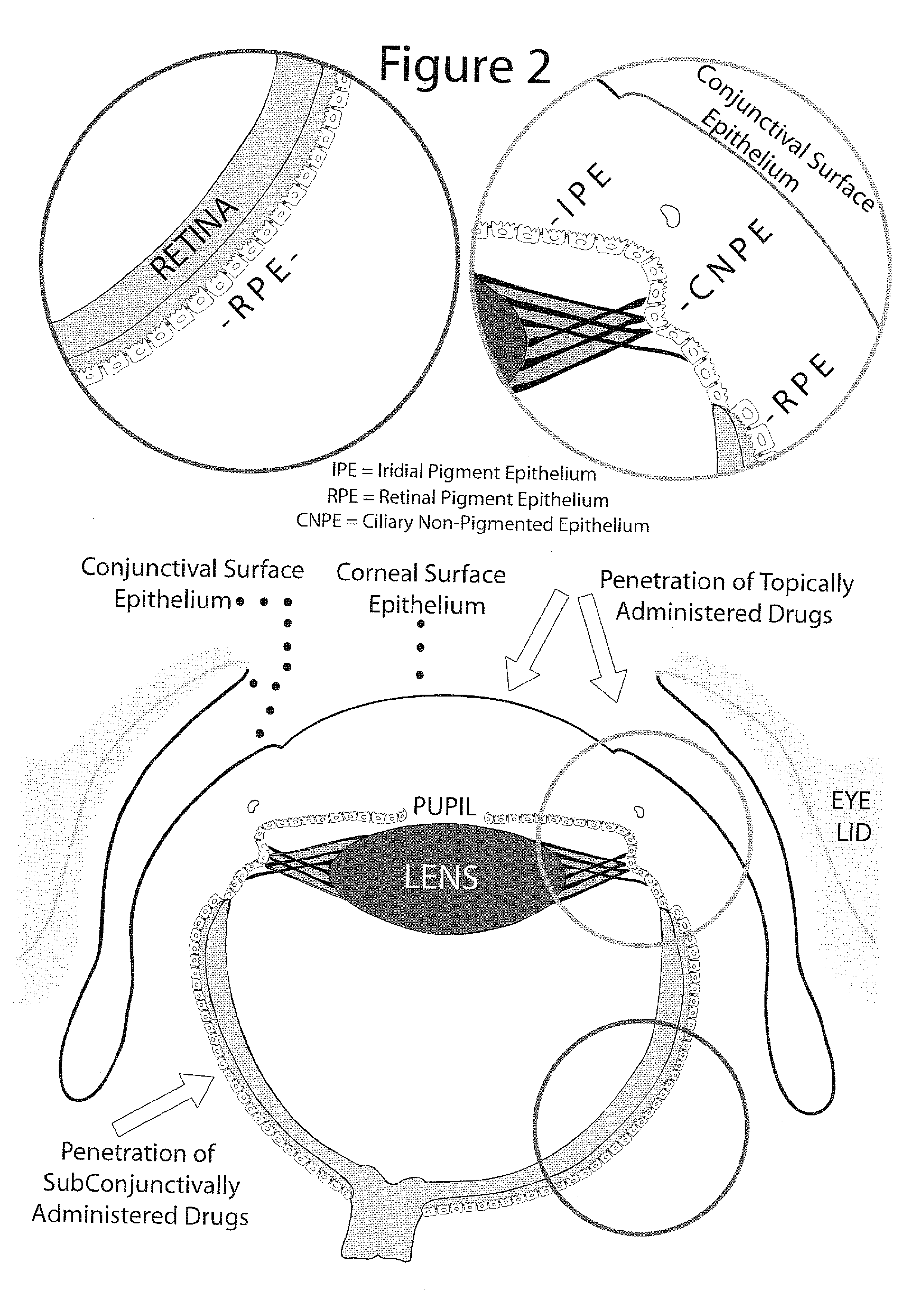Method for enhanced ocular drug penetration
a drug penetration and enhanced technology, applied in the field of enhanced ocular drug penetration, can solve the problems of drug diffusion through the pupil, drug availability in aqueous humor does not ensure availability at more remote target tissues, drug diffusion is very low, etc., and achieve the effect of enhancing ocular drug penetration
- Summary
- Abstract
- Description
- Claims
- Application Information
AI Technical Summary
Benefits of technology
Problems solved by technology
Method used
Image
Examples
example 1
[0073] Intervention: PlGF was administered to the vitreous cavity and fluorescent labeled dextran solution was injected intravenously. In the control group animals, the same intervention was done but with the administration of buffered physiological solution (BPS) instead of PlGF.
[0074] Results: Special attention was made to obtain similar sections through the central retinal blood vessels for both of the PlGF treated and control animals. While the drug was seen to be confined to the lumen of blood vessels in the control group, the same retinal vessels have show significant leak of drug in the PlGF treated group, with subsequent drug penetration to the retina.
example 2
[0075] Intervention: PlGF was administered topically on the ocular surface followed by topical administration of the fluorescent-labeled dextran solution. In the control group animals, the same intervention was done but with the administration of BPS instead of PlGF.
[0076] Results: In the control group animals there was no drug penetration through the surface epithelium of the cornea and conjunctiva. After the PlGF intervention numerous sites of drug penetration between adjacent cells of the ocular surface epithelium were observed. Consequently, there was a remarkable drug penetration to the corneal stroma, deep penetration through the conjunctiva and penetration to the subconjunctival space. Furthermore, collecting vessels loaded with drug were leaking and releasing the drug at periocular, episcleral / scleral and choroidal sites, with drug penetration into the ciliary body and anterior retina.
example 3
[0077] Intervention: PlGF was administered to the anterior subconjunctival space followed by administration of the fluorescent-labeled dextran solution to the anterior subconjunctival space. In the control group animals, the same intervention was done but with the administration of BPS instead of PlGF.
[0078] Results: Compared to minimal intraocular drug penetration in the control group animals, there was a massive intraocular penetration in the group with PlGF intervention with remarkable drug accumulation in the ciliar body, anterior retina and corneal endothelial cells. Blood vessels loaded with the drug and leaking were seen again in the PlGF treatment group.
PUM
| Property | Measurement | Unit |
|---|---|---|
| thickness | aaaaa | aaaaa |
| volume | aaaaa | aaaaa |
| pore diameter | aaaaa | aaaaa |
Abstract
Description
Claims
Application Information
 Login to View More
Login to View More - R&D
- Intellectual Property
- Life Sciences
- Materials
- Tech Scout
- Unparalleled Data Quality
- Higher Quality Content
- 60% Fewer Hallucinations
Browse by: Latest US Patents, China's latest patents, Technical Efficacy Thesaurus, Application Domain, Technology Topic, Popular Technical Reports.
© 2025 PatSnap. All rights reserved.Legal|Privacy policy|Modern Slavery Act Transparency Statement|Sitemap|About US| Contact US: help@patsnap.com


